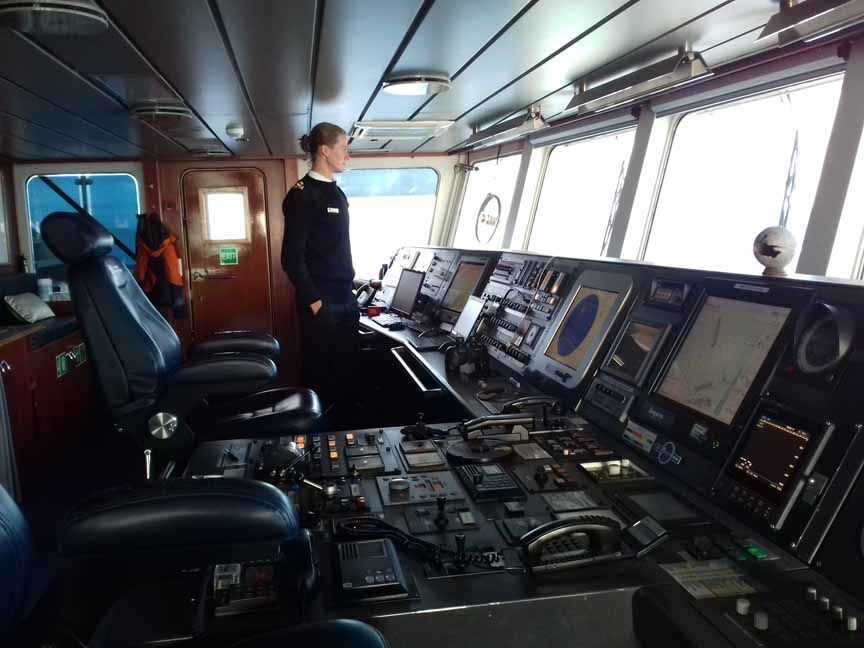20.18 hours finds National Geographic Orion transiting the Antarctic Convergence near the middle of the Drake Passage. The weather is calm and clear, and we can quite definitely say that we are experiencing a “Drake Lake” crossing. The calm seas make life comfortable for those aboard without sacrificing the sense of adventure. The storm-loving sea birds of the South Atlantic, however, would likely beg to differ. Before the lessening of this morning’s wind, guests wandering to the bridge are treated to brief views of wandering, gray-headed, and black-browed albatross. These large birds need wind to give them lift, which allows them to take-off and glide effortlessly across the waves. In these calm conditions they tend to remain on the surface of the sea, which makes them difficult to spot.
The Antarctic Convergence is where the relatively warm waters of the northern oceans meet the cold waters of the Antarctic ocean. The difference may only be about 5 degrees Celsius, but this change takes place over only, say, 30 miles and is, thus, sudden as it marks the border into the Antarctic proper. From here on south we can expect to see birds and animals that choose to live in this nutrient-rich but frigid environment. We can also expect to see icebergs looming along the horizon.
As guests adjust to their new Antarctic surroundings, three presentations are offered by the staff to help prepare them for the ventures ahead. They begin with Ryder Redfield giving an introduction to expedition photography. Javier Cotin told us about the seabirds of the Southern Ocean, how to identify them, and how they manage to live out at sea for the majority of their lives. Finally, Tom Ritchie shared his extensive knowledge of the continent by giving a presentation titled, “An Introduction to Antarctica,” outlining much of the geological and natural history of this unique environment.
The last covered the dos and don’ts of exploring this fragile ecosystem. This was followed by the bio-decontamination of any bags, boots, sticks, and any clothing that might pose a threat to the delicate environment.
National Geographic Orion is heading steadily towards the South Shetland Islands, and we expect them to come in sight around lunchtime tomorrow, and then the true adventure in the Great White Continent can begin.







